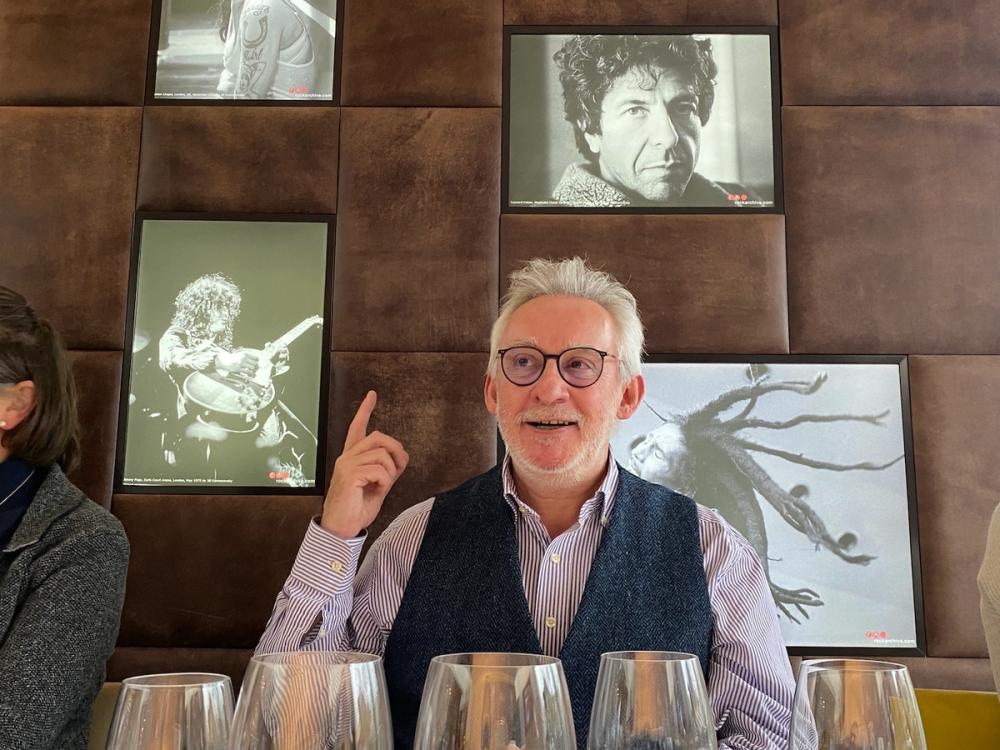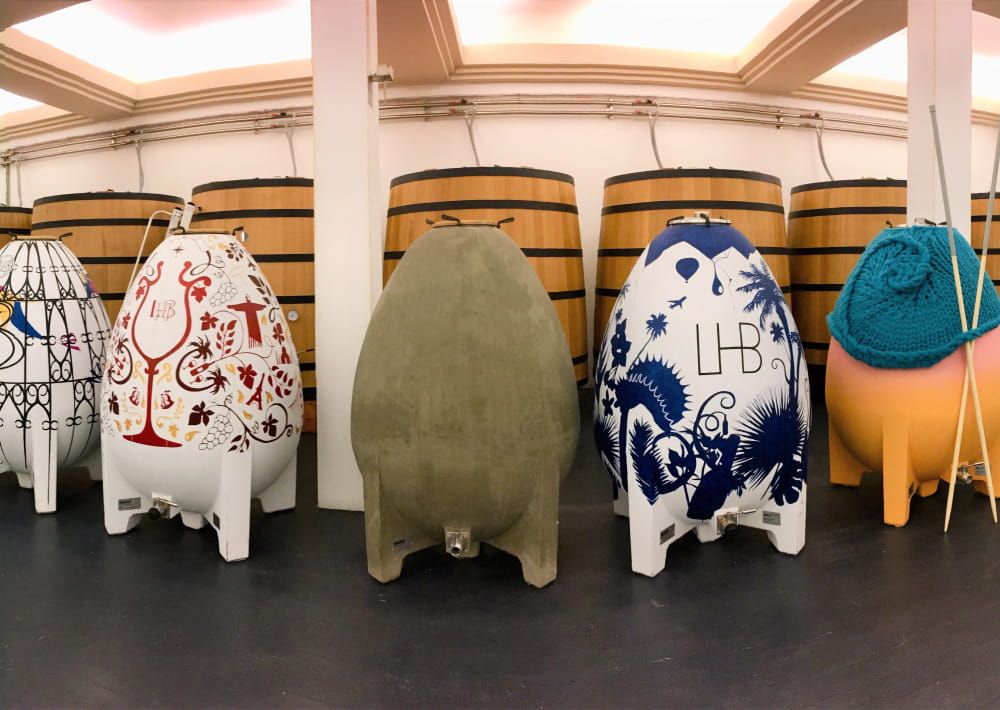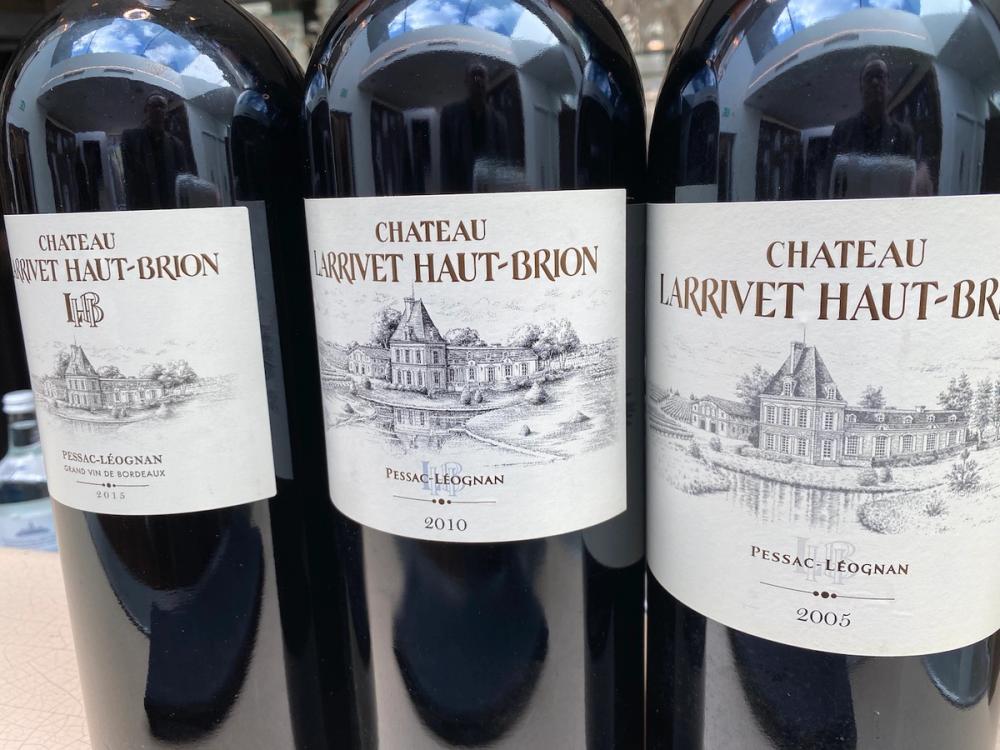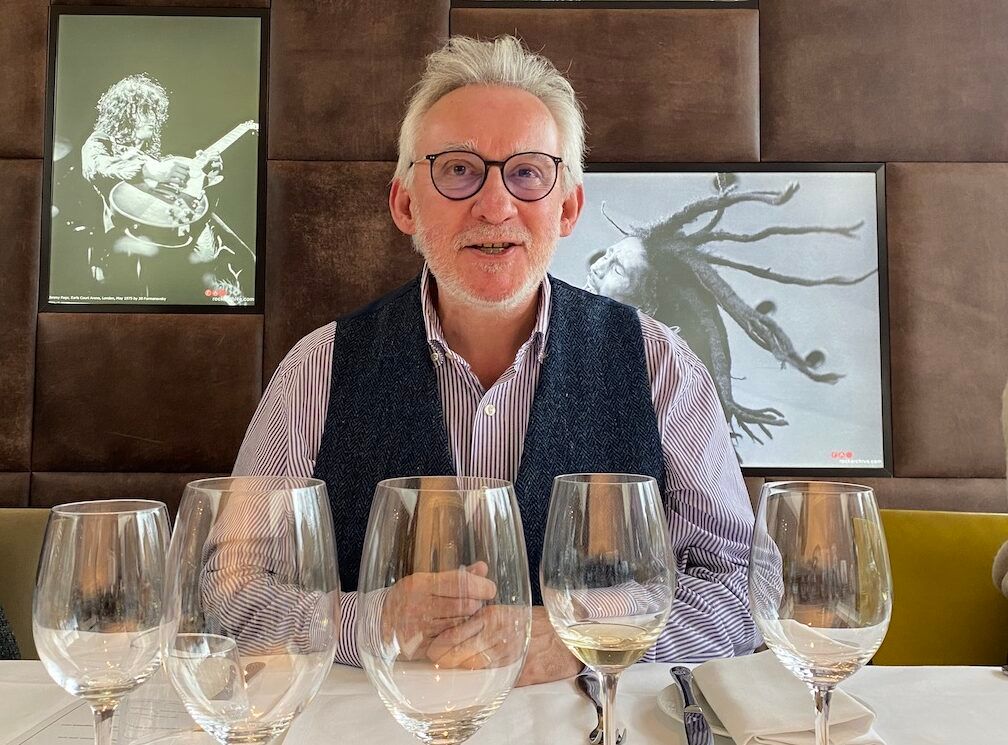“We are not trying to be the biggest producer but an outsider… the best of the outsiders,” Lemoine says.
Château Larrivet Haut-Brion is ditching Merlot in the final blend of its Grand Vin for the 2021 vintage and making a Cabernet-only wine, the first Bordeaux estate to thus far announce a pure Cabernet blend for 2021. The move is part of a sea change at the unclassified Left Bank estate where Merlot is being replaced wholesale with Cabernet Franc as a result of climate change.
Merlot is an earlier ripening grape, which is why it was used to replace Malbec in the first place in Bordeaux, but this also makes it more susceptible to April frosts which are becoming a more regular occurence and also heat spikes which pushes up the alcohol and loses acidity. Larrivet Haut-Brion sees the move as a permanent change of direction to “making the wines of yesteryear” with Merlot vines slowly being replanted with Cabernet Franc.

Bruno Lemoine, Larrivet Haut-Brion tasting, Frederick’s, London 2022
Meeting the winemaking team earlier in the year for a tasting that showed the effect of dialling up Cabernet Franc in the blend, managing director Bruno Lemoine who joined the estate in 2007, was adamant that the gravelly soils of Pessac Leognan are better suited for Cabernet. In addition, Cabernet Franc brings greater freshness to a final blend, helps keep alcohol lower, and acidity high in the balance.
Lemoine’s team consists of winemaker François Godichon who arrived at Larrivet Haut-Brion in 2015 and cellar master Charlotte Mignon who joined two years ago with the overall change in direction at the estate being overseen by Stephane Derenoncourt who took over the consultant role from Michel Rolland, who had historically pushed for a more Merlot-heavy blend.
“I have a lot of respect for Michel Rolland – he put the winery on the map – but the gravelly soil of Pessac Leognan is better suited to Cabernet Sauvignon,” explains Lemoine over lunch. Lemoine’s extensive knowledge of growing Carbernets on gravelly soils were honed at Châteaux Montrose and Lascombes.

Some of the 48 amphorae at Larrivet Haut Brion.
Bordeaux meets Burgundy
When Lemoine joined the 290 year-old estate the first thing he green-lighted was an extensive terroir analysis of the complex mosaic of soils Larrivet Haut-Brion has on its 75 hectares of vineyards deep in the heart of Graves’ Grand Cru territory. The estate’s parcels were then restructured with the cellar modernised to accommodate more precise vinification of individual micro-plots.
For François Godichon, a Burgundian, this was winemaking after his own heart, his team has been experimenting now with ageing times and vinification vessels according to each block – using combinations of large oak vats, concrete eggs, terracotta amphorae (they have 48 750 litre vessels) and new and old oak barrels. The fruit is whole-bunch pressed with 4-5 weeks maceration, and barrel toasting chosen by variety. In another deviation from the norm, Godichon bottles the grand vin just four weeks after blending.
“We want to have the best of both worlds – Burgundy and Bordeaux,” Lemoine continues, explaining that the new direction towards greater freshness, elegance and finesse in the reds was confirmed with the 2017 vintage when, because of frosts that particularly hit the Merlot, the estate was forced to make its grand vin with just 12% of Merlot.
Of the seven vintages I taste of the red grand vin before lunch, 2017 is clearly a turning point with its complexity and freshness sticking out from the older wines which felt heavy-handed in comparison – Rolland’s 2010 and 2005 vintages in particular, the 2010 being a Merlot/ Cabernet Sauvignon blend (55/45%) and the 2005 which was, again, Merlot-dominant with just 3% of Cabernet Franc in the blend.
The 2010 and 2005 Larrivet Haut-Brion, even though they are served from magnum, taste almost jammy by comparison to the 2017, (and no that’s not because the estate is owned by Bonne Maman’s Gervoson family!) these are big, Merlot-rich and lack the spriteliness of the 2017 or even the 2015 which was the first vintage made by Godichon.

Tasting the Michel Rolland-influenced, Merlot-heavy wines
Lemoine explains that (unusually) the entire team at Larrivet Haut-Brion are not from Bordeaux, which makes it easier he feels for them to approach making Left Bank Bordeaux without preconceptions and stymied by tradition.
This ‘freestyle’ approach to Bordeaux was evidence in the way Lemoine and his team conducted the wines at lunch. In fact, lunch with Larrivet Haut-Brion was a tasting with one very big surprise.
The 13 wines that Lemoine showed before lunch were all on song; the pairing with the food at Federicks in London’s Islington district was perfectly atuned… no surprises there, then. What was really exceptional was when we were served three wines which we had to blind-taste – one turned out to be a Champagne, the second was a Languedoc wine and the third was a white Burgundy for chrissakes. For me this was a first. I have never been served a Burgundy by a Bordelais when they have been showcasing their wines. And vice versa.
Bizarre? Not really. The point that the team was trying to make was from here on in they are following the lead of white Burgundy for their own white wines and with their red wines they are trying to achieve the freshness inherent in the Terrasses du Larzac wine.
“We are not trying to be the biggest producer but an outsider… the best of the outsiders,” he says.
So how were the wine tasting?

Larrivet Haut-Brion tasting, Frederick’s, London 2022
We tasted five white wines: Larrivet Haut-Brion Blanc from 2020, 2019, 2018 and 2011 and the second wine Les Demoiselles de Larrivet Haut-Brion Blanc from 2020. We tasted seven red wines: Larrivet Haut-Brion 2019, 2018, 2017, 2016, 2015, 2010, 2005 (the last three en magnum) and the second wine Les Demoiselles de Larrivet Haut-Brion 2019.
Of the reds the wines that stood out for me were the 2015, 2017 and 2019.

Larrivet Haut-Brion 2015
This is a transition vintage and Godichon’s first. Very ripe, concentrated and intense, you can feel the 33% Merlot but it is fresh, open, generous, with a voluptuous mouthfeel and lovely balance. The wine is on the fleshy side but it’s structured too with great acidity – you can feel the weave of the tannins, it has a great register on the palate, slightly woody on the front palate – blackberry, cassis, mulberry, very dry – a hint of mushroom.
Larrivet Haut-Brion 2017
Deep ruby red, cherry red edging. Complex nose – green leaf, mulberry, bramble, bit of meatiness. Beautifully perfumed nose – you can immediately detect the 23% Cab Franc on the nose – with a green leaf character. The wine is structured, textured feels younger, with a nice freshness, bags of fruit, ripe tannins that are more apparent – needs more time, but clearly a sea-change in the direction of the estate.
Larrivet Haut-Brion 2019
Understandably less complex but beautifully fresh. Powerful nose with profound, beautifully ripe fruit – bramble, black berries. In the mouth there is blueberry, blackberry, blue plum, a hint of wood. The wine is fleshy, concentrated, rounded with well-integrated tannins and a tight weave of fine-grained tannins. Nice finish, a tiny bit of citric-charged acidity and a sour cherry note. Good balance.
Of the whites the wines that stood out for me were the 2019, 2020 and the 2011 (served with lunch)

A match made in heaven: Larrivet Haut-Brion tasting, Frederick’s, London 2022
Larrivet Haut-Brion blanc, 2019
Classic and very classy Bordeaux blanc that really shone in the 2019 vintage and looks good to drink now or any time over the next 20 years. Both aromatically and on the palate this wine offers so much and seriously good value given the standard of winemaking.
To look at, the wine is medium yellow; the pretty bouquet offers honeysuckle, pollen, lemon peel and gooseberry, with a richer honeyed/creamy note with time in the glass; on the palate the wine is light to medium weight, with a slight oiliness but lovely acidity and balance to carry the baked orchard fruit, orange peel, lemon zest and saline. Structured with some power but it all hangs together effortlessly and superbly well.
Larrivet Haut-Brion blanc 2020
Although this is another classic Graves white it was more reserved than the 2019 – just a year adding so much more complexity. The Semillon is adding a smoky, richer note here – it opens out in the glass over time – so pretty with honeysuckle and a ripe basket of fruit. In the mouth the wine is honeyed with yellow stone fruit, quince, apples, yellow plums. There is a great structure here, seamless, lovely texture too, very complete, ripe, but balanced.
Larrivet Haut-Brion blanc 2011
To prove how well these white wines age, the 2011 was served with a scallops starter, the toasted hazelnut used in the dish drawing out the rich nuttiness in the wine. Deep gold, rich and nutty, ripe, deep and profound flavours, great length, oleaginous in the mouth with decenbt acidity and a pleasing dry, bitter finish. Serious and seriously gastronomic.
Also impressive were the two Les Demoiselles de Larrivet Haut-Brion wines, the red in 2019 vintage and 2020 in white – both served from magnum and impressively good for the money.










































